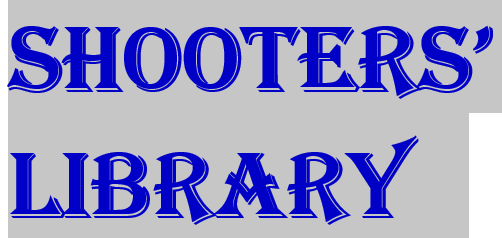
WEAPONS OF WORLD WAR II by Alexander Delude.
Published by Parragon Books Ltd., Queen Street House, 4 Queen Street, Bath BA1 1HE, UK, or in the US by Cambridge Publishing Management Ltd. Price: $45.00 hardback, or $25.00 softbound. Available at Amazon or some bookstores.
By Larry Sterett
Contributing Editor
This 320-page oversize hardbound volume features an introduction, followed by seven topic sections, from Infantry Weapons to Ships, a four-page index and three pages of picture credits. (This tome has over 300 illustrations, both color and black and white. Among the latter are actual combat-era photos.)
One feature this reviewer found unusual was the presentation of the small arms calibers, such as for the German Mauser 98 as 0.3 inch (7.92 mm), the US Colt M1911 as 0.45 inch (11.43 mm), and the Japanese Nambu Model as 0.31 inch (8mm). The are some errors in captioning of illustrations. An obvious example is the US M1928 Thompson submachine gun with a photo of the much simpler M1; no ribbed barrel or compensator, side-mounted charging in place of top-mounted, and the M1 would not accept 50- or 100-round drum magazines, only sticks. On the following page is the Springfield Semi-Automatic Rifle M 1903… The photo caption is the same, except the photo is of a bolt action M1903 with the bolt handle on the left side. (?) Semi-automatic M1903? It was another threedecades beforethe U.S. adopted a semi-automatic rifle, the M1 Garand.
In the Infantry Weapons section for France the caption for the French Model MAS machine pistol reads “The MAS 38 was the last manually loaded rifle in the world to be adopted by an army.” On the lower half of the page is the bolt action MAS 36 Repeating Rifle with 5-round internal magazine, which is probably what the caption for the MAS 38 was intended. (The MAS 1938 MP was chambered for what originally was the handgun-size .30 Pedersen cartridge for the semi-automatic Pedersen Device designed for altered U.S.M1903 Springfield rifles a couple of decades prior. France also produced at least two small handguns chambered for this low-powered cartridge, but they are not, unfortunately, mentioned in this tome.
Each of the weapons covered has a small specifications table provided, in addition to the explanatory text. For the small arms such spec data included Caliber, Cartridge, Muzzle Velocity, Firing Rate, Weight unloaded, Magazine capacity, and Operational range. (These spec tables are featured throughout this book, but the data varies for each different category…vehicles, aircraft, ships, etc.)
One problem readers may encounter is with the numerical descriptions. An example is the cartridge we frequently incorrectly call the 9mm Luger, but correctly as the 9mm Parabellum. In this tome it is listed as the 0.35 x 0.75 in parabellm. The 8mm Japanese Nambu cartridge is listed as 0.31 x 0.85 in. Just a wee bit different.
Another problem noted were typos in the metric system of measuring. An object on one line measured 315 mm, and on the following line 315 cm, or ten times larger. The proofreader apparently missed it and possibly others of similar nature. In a tome of this magnitude, it is not surprising, but readers need to check if they are not sure. (In the Aircraft section the entire caption for a photo of a B-17 is in German, although this is an English language publication.)
Order of presentation in each of the chapters, or topic sections, is Germany, Italy, Japan, Poland, France, United Kingdom, Soviet Union, and USA, providing the country had something different, such as Armored Vehicles. (The lead-in to each major topic section was, or is a double-page photo, such as an infantryman advancing, a line of moving tanks, a B-17 in flight, and a battleship firing a broadside.) The largest section is Aircraft covering the planes of seven countries in 88 pages. The shortest section covers the Special Weapons of four countries in a dozen pages. (Two pages are devoted to Hobart’s Funnies in the Armored Vehicles section.)
This tome is an excellent one on the weapons used by both the Allied and Axis forces during World War II. True, there are errors, but a careful reader should be able to note them. The illustrations are superb and the text overall is good.
If you are a history buff of World War II, this volume deserves space on your reference shelf.



